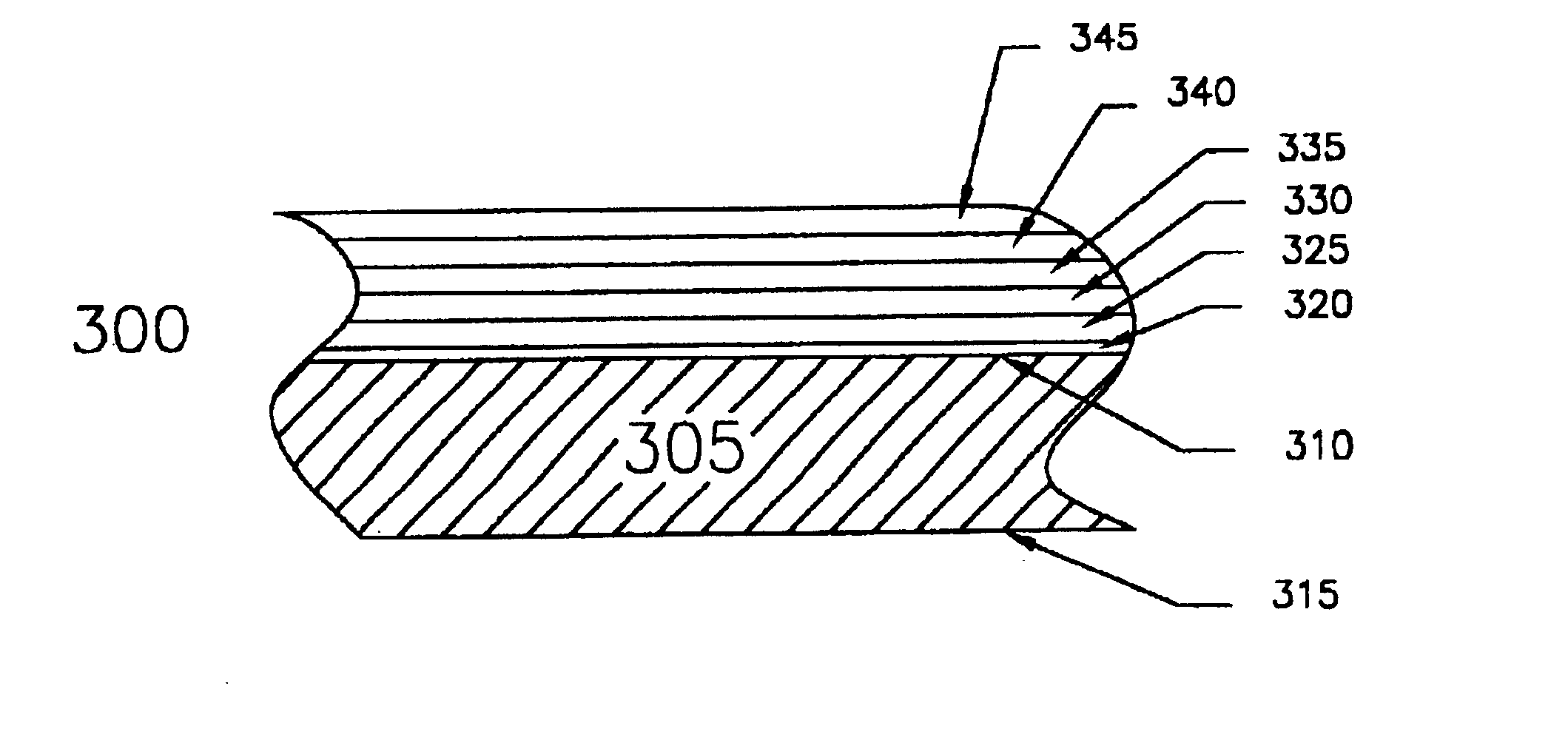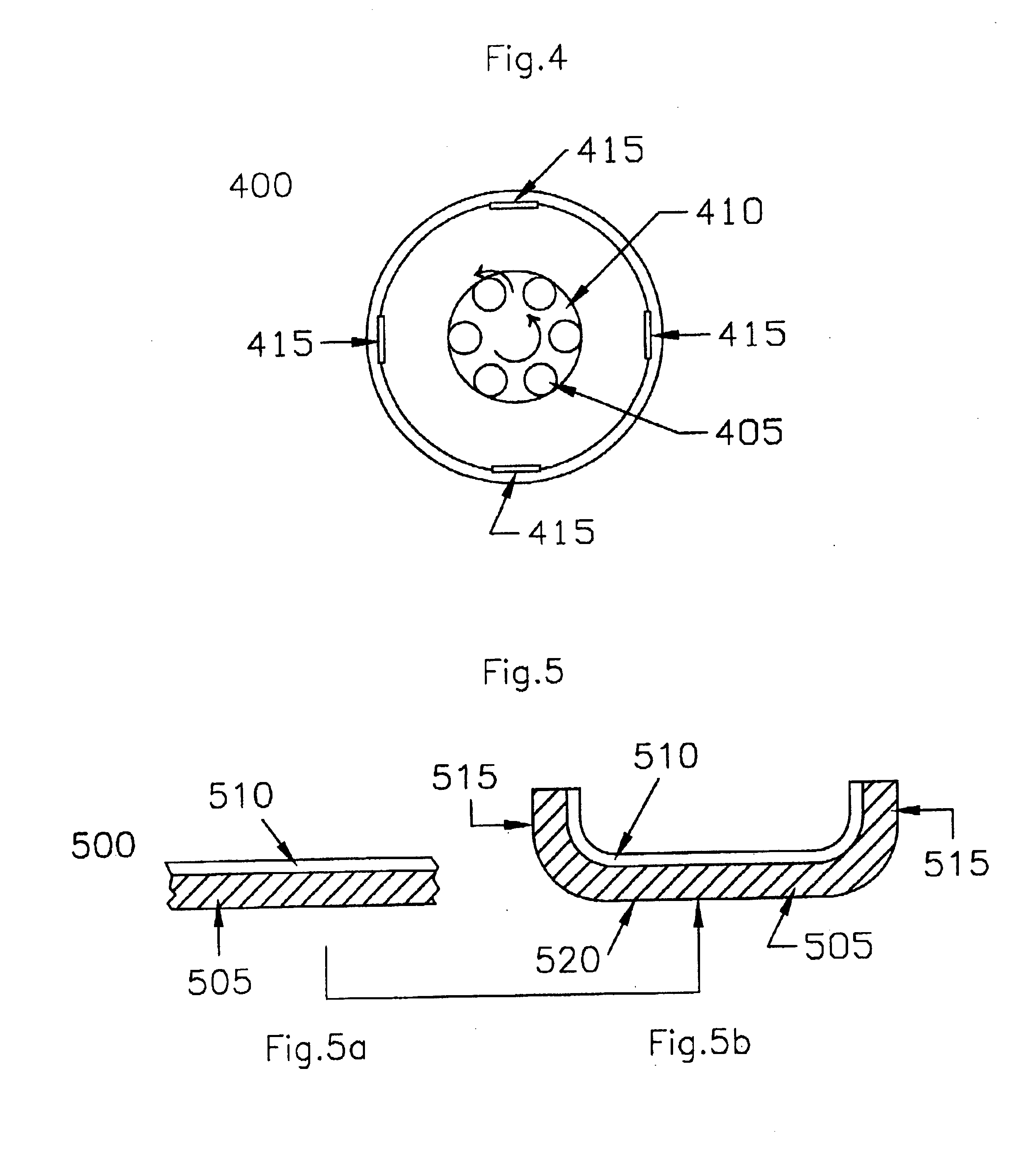Foodware with multilayer stick resistant ceramic coating and method of making
a ceramic coating and multi-layer technology, applied in the direction of superimposed coating process, electric/magnetic/electromagnetic heating, instruments, etc., can solve the problems of cast iron rusting, easy scratching, health problems,
- Summary
- Abstract
- Description
- Claims
- Application Information
AI Technical Summary
Benefits of technology
Problems solved by technology
Method used
Image
Examples
experiment 1
[0059]An egg was fried in pans or pots having different treated surfaces, in order to compare the coating of the present invention to existing coatings with respect to stick resistance performance. Examples 1 and 2 were stainless steel pots made of a clad material having an aluminum core. Examples 3 and 4 were zirconium nitride coated bakeware made of a clad material with an aluminum core. Examples 5 and 6 were PTFE coated aluminum pans.
[0060]Examples 7, 8, and 9 were 7.5 inch diameter stainless steel pots made of a clad material with an aluminum core. The pots were coated using the process described above. The coatings were alternating layers of (Ti,Al,Cr)N / CrNx, and the coating thickness was about 2 microns. In depositing the (Ti,Al,Cr)N layers, three Cr targets and one TiAl target were used for coating 1220, while coating 1-14 used four Cr targets and one TiAl target.
[0061]The pots and pans were either sprayed with cooking oil or not sprayed with cooking oil, and an egg was fried...
experiment 2
Test
[0069]A more severe nice cooking test was also performed to evaluate the non-stick performance of the coatings for salty-based and acidic-based foods.
[0070]Rice cooking conditions differ from “normal” cooking with oil. Rice sticks to foodware when the rice dries out on the surface of the rice cookware. The solidified rice grains adhere and stick to the cookware. “Browned” or burned (“crunchy”) rice occurs. Even if the rice is simply kept “warm” for too long, the bottom of the rice pile can be and it will stick to the cookware. This is often hard to remove and to clean, even with PTFE-coated pots.
[0071]Most rice cookers are equipped with temperature and timing controls in order to limit the drying out of the rice and the resulting sticking problem.
[0072]In addition, rice cooking mostly involves salty-based or acidic-based food mixed with rice. PTFE is sensitive to acidic-based foods, and titanium nitride and zirconium nitride cookware will be discolored by salty-based foods.
[0073...
experiment 3
[0086]304 stainless steel blanks (8″×8″ square, 0.8 mm thick) were pre-buffed to a fine #4 finish with a smoothness at 10 micro inches and to a mirror finish polish with a smoothness of 2-4 micro inches. The blanks were thoroughly cleaned and dried. They were loaded into the chamber, and coated as described above. The total thickness of the coating was about 1.5 microns.
[0087]After coating, the coated surface was covered with an adhesion PVC film to protect the surface and to prevent damage during the forming process. FIG. 5a shows the coated blank 500. There is a blank (substrate) 505, with the multilayer coating 510 of the present invention. The individual layers are not shown in FIG. 5. The 8″ diameter coated blank was then shallow drawn to a 6″ diameter pan with a flat bottom shown in FIG. 5b. The sidewalls 515 of the pan are at a 90° angle to the bottom 520, with a small radius.
[0088]The coating of the present invention adhered well on all surfaces, including the radius area. T...
PUM
| Property | Measurement | Unit |
|---|---|---|
| Thickness | aaaaa | aaaaa |
| Thickness | aaaaa | aaaaa |
| Thickness | aaaaa | aaaaa |
Abstract
Description
Claims
Application Information
 Login to View More
Login to View More - R&D
- Intellectual Property
- Life Sciences
- Materials
- Tech Scout
- Unparalleled Data Quality
- Higher Quality Content
- 60% Fewer Hallucinations
Browse by: Latest US Patents, China's latest patents, Technical Efficacy Thesaurus, Application Domain, Technology Topic, Popular Technical Reports.
© 2025 PatSnap. All rights reserved.Legal|Privacy policy|Modern Slavery Act Transparency Statement|Sitemap|About US| Contact US: help@patsnap.com



